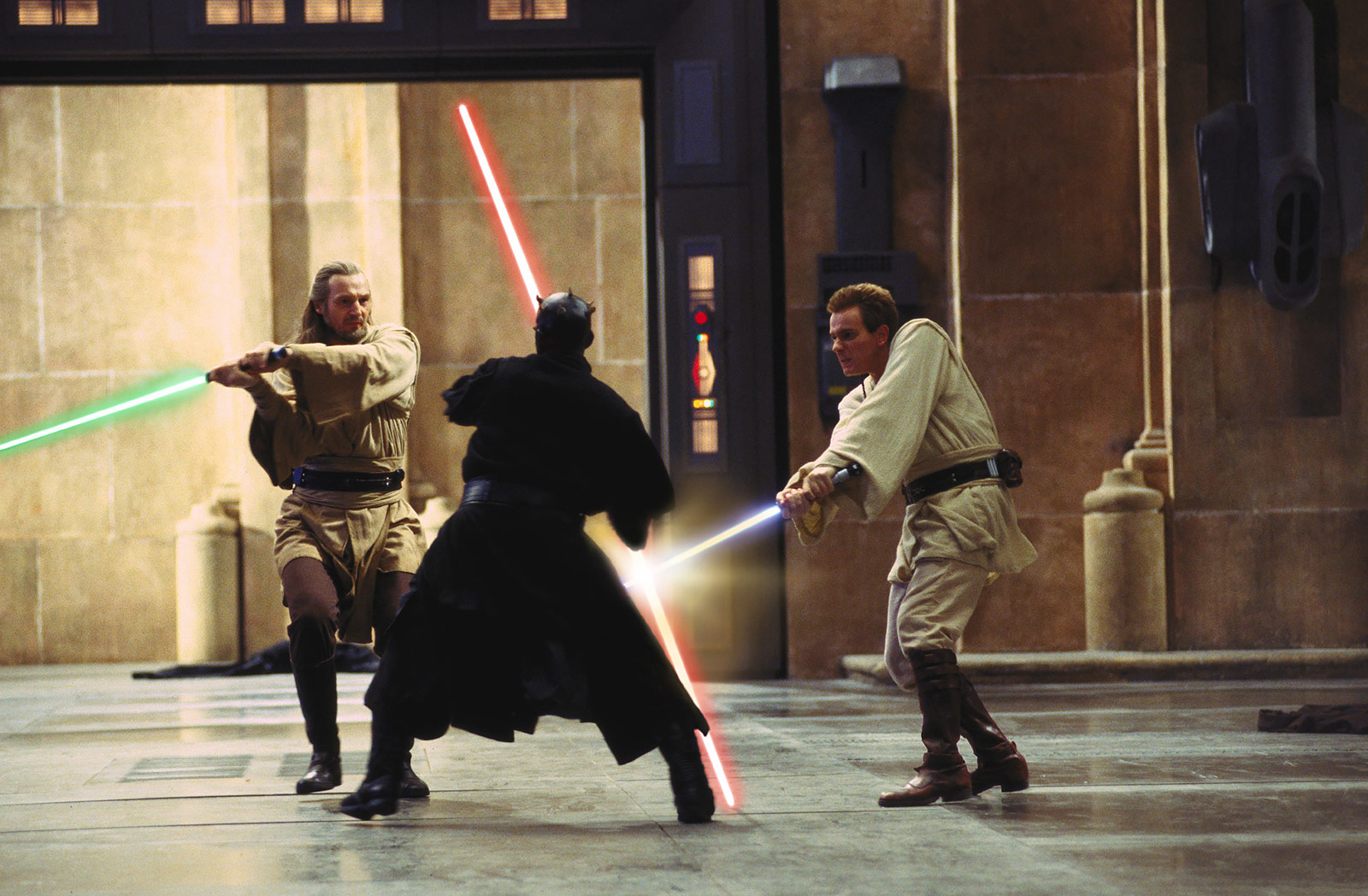
This duel, known as Duel of the Fates, took place in Star Wars: Episode I The Phantom Menace. (Image © Disney/Lucasfilm)
The Star Wars Prequels at 25
You Underestimate Their Power!
"Difficult to see. Always in motion is the future." You got that one right, Yoda! But whether a film becomes part of the collective pop culture consciousness (and what reputation it may hold) cannot be predetermined. Or "postdetermined", since a film's perception evolves over time. Just think of The Big Lebowski. Blade Runner. Fight Club. Scott Pilgrim vs. the World. All highly revered classics – which hardly moved anyone or made big money when they were released. But perhaps the greatest reevaluation in the history of popular culture is reserved for the biggest pop culture franchise: Star Wars. Specifically: The Prequel Trilogy.
Much has been written about the Prequels. Depending on who you ask, Episodes I to III were a joke, child's play, objectively bad, a political misstep, a source for memes, or all of the aforementioned. But 25 years after the release of Star Wars: Episode I – The Phantom Menace, this image has been reversed. The Prequels are not only praised; they are deeply loved. Why? What do the Disney sequels have to do with it? What role does nostalgia play? And would any of this have happened without memes? Let's dive in!
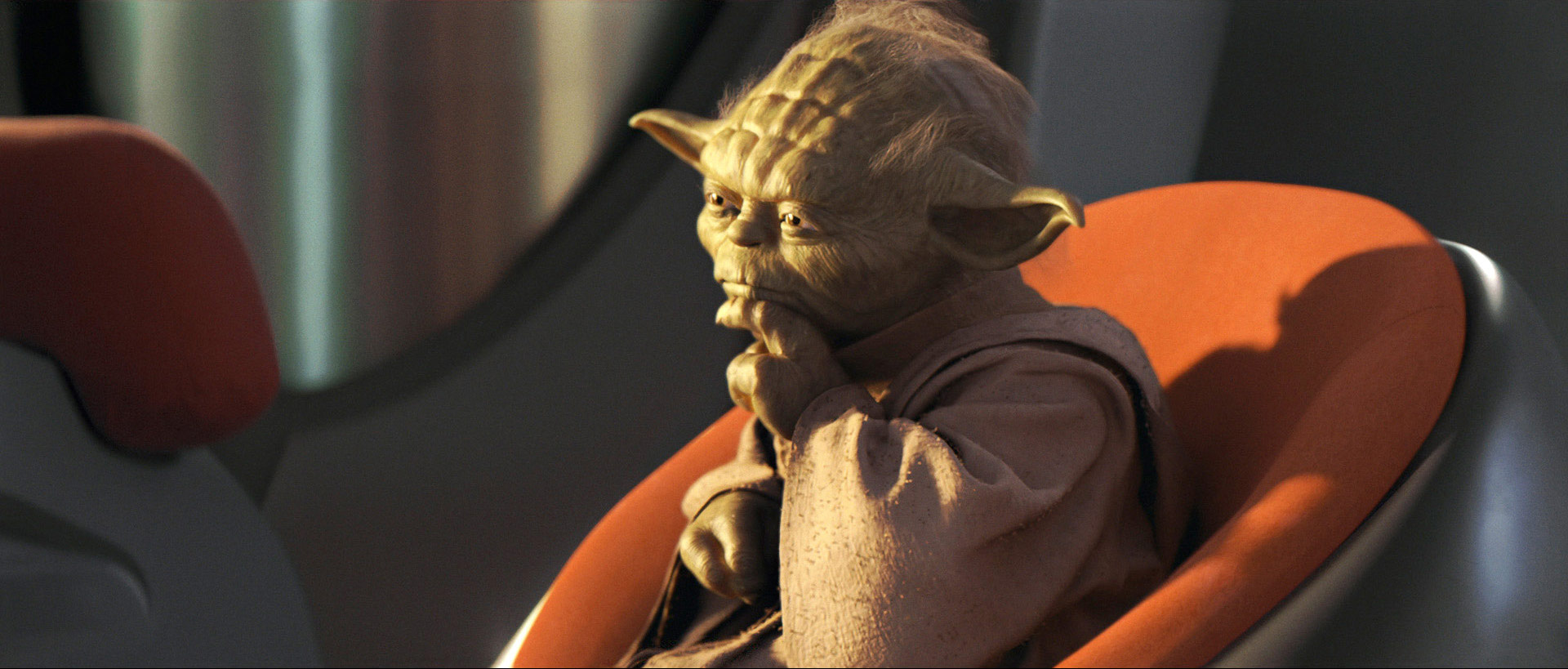
Even Yoda in his prime could not have anticipated how the reputation of the prequel trilogy would change. (Image © Disney/Lucasfilm)
A Grand Narrative
One of the main criticisms back then was that George Lucas made the Prequels. Yeah, sounds odd. But it made sense at the time because Lucas was pretty much untouchable. A living legend. For God’s sake, the man invented Star Wars. Revolutionized the special effects industry. Twice! Bought himself near-total freedom with his legendary merchandise deal. And to top it off, he significantly shaped another pop culture trilogy, namely Indiana Jones. All of this gave George Lucas carte blance when developing and filming the Prequels. Who would dare to contradict this man? Right: no one.
However, many critics, perhaps rightly, felt that more voices, more stakeholders would have benefited the project considerably. Yet it is precisely Lucas’ free reign that revitalized the Prequels in the long run! After all, the biggest flaw of Disney's Sequel Trilogy is the absence of a grand plan. Yes, J.J. Abrams had a great start with Star Wars: Episode VII – The Force Awakens, even though he sticked a little too close to Episode IV. But Star Wars: Episode VIII – The Last Jedi changed everything (we won't discuss that one here), before Abrams once again steered Episode IX hard in the opposite direction. A constant back and forth that didn't exactly help the films.
The Prequels are the opposite. Whether you hate or love them, they paint a unified picture. They were thoroughly thought through before filming even started. And they wonderfully expanded the Star Wars universe (minus midi-chlorians). They showed us what the world was like before the Empire. And they traced the path of one of the greatest movie villains of all time. The overall narrative just fits together. And the Prequels themselves were also fantastically expanded, especially through the excellent animated series, The Clone Wars.
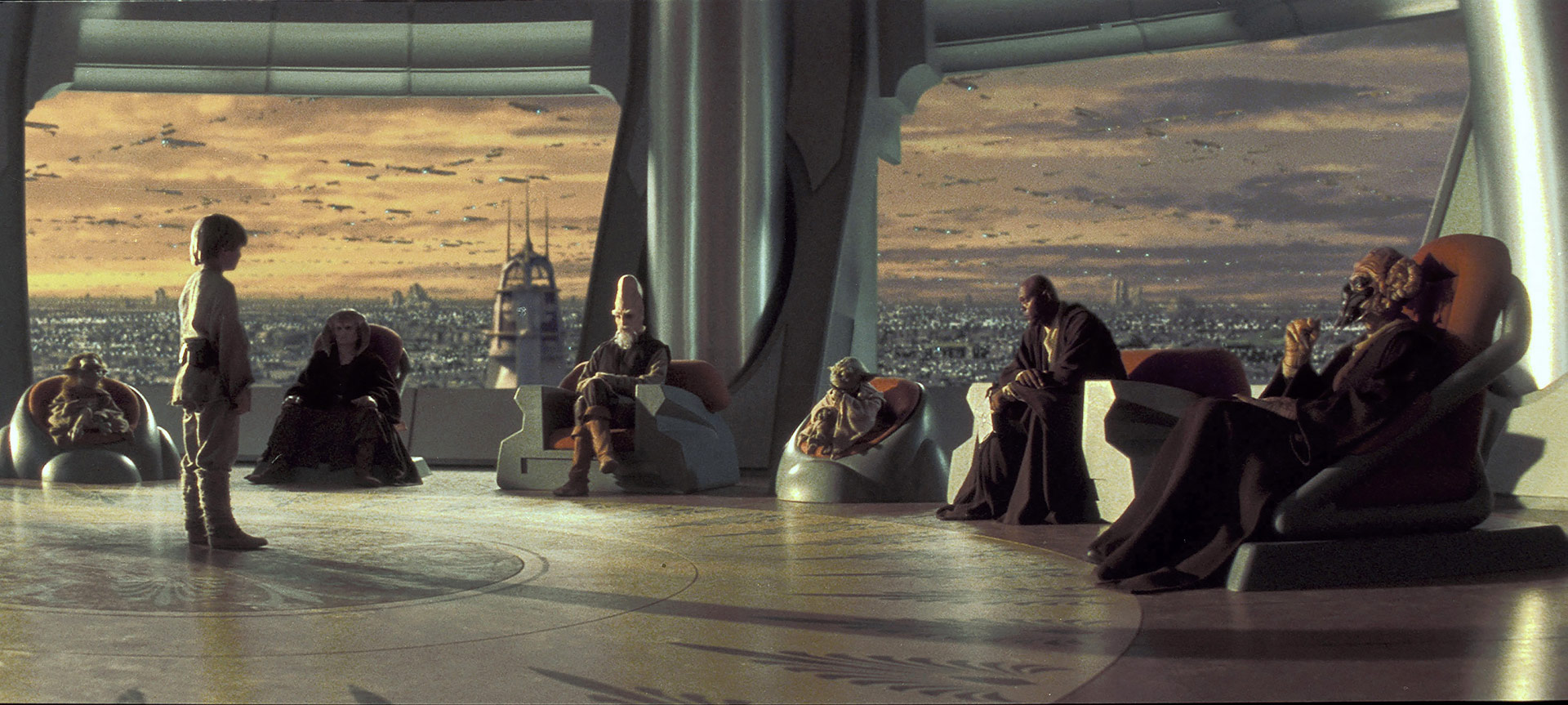
Decisions are made democratically in the Jedi Council. In contrast, George Lucas had more or less sole control over the production of Episodes I to III. (Image © Disney/Lucasfilm)
So Much Good ...
Speaking of excellence: The Prequels offer more than they were given credit for back then. We think especially of Episode I: The Phantom Menace, which feels the most like classic Star Wars. Maybe it’s because for this one, George Lucas relied more on practical effects and models, especially in contrast to Episodes II and III. In the initial theatrical version, Yoda was even played by Frank Oz (and unfortunately later replaced by CGI)! Also, The Phantom Menace is the only film that shows us the Jedi Order in all its splendor. No other Star Wars film was ever allowed to be so vivid, so colorful, especially not the two subsequent films.
Not to mention the two set pieces we can all agree on: the spectacular podrace and the epic Duel of the Fates between Qui-Gon Jinn, Obi-Wan Kenobi, and the villain with the best makeup of all time, Darth Maul. Including John Williams at his best and the legendary reveal of the double-bladed lightsaber. While lightsaber duels in the original trilogy were primarily emotional, The Phantom Menace brought us perfectly choreographed action like we’d never seen before!
Above all, the Prequels are based on one grand idea: the hero's journey! Sure, seen that in a thousand other stories. Been there, done that. Only here, the hero's journey becomes a villain's journey. It shows us how the good-natured Anakin becomes the galaxy's greatest monster. Quick note on the supposedly poor acting performances. Even though the dialogues are not exactly worthy of an Academy Award, the actors are! At least Ewan McGregor as Obi-Wan and Ian McDiarmid as Sheev Palpatine were absolutely brilliant! Ditto Liam Neeson, whom we would have liked to see more of as Qui-Gon. And the fact that George Lucas managed to integrate Samuel L. Jackson into his universe in a sensible (and cool!) way is nothing short of outstanding!
Another big plus: Unlike the Disney films, the Prequels rely less on nostalgia. Which makes sense, seeing that the events of the classic trilogy had not yet occurred. Therefore, Lucas essentially focused on six things to appeal to old fans: Anakin, Obi-Wan, Palpatine, R2-D2, C-3PO, and Tatooine. Compare that to the thousand "Did you see? Did you get it? Cool reference, right?" callbacks of the Sequel Trilogy.
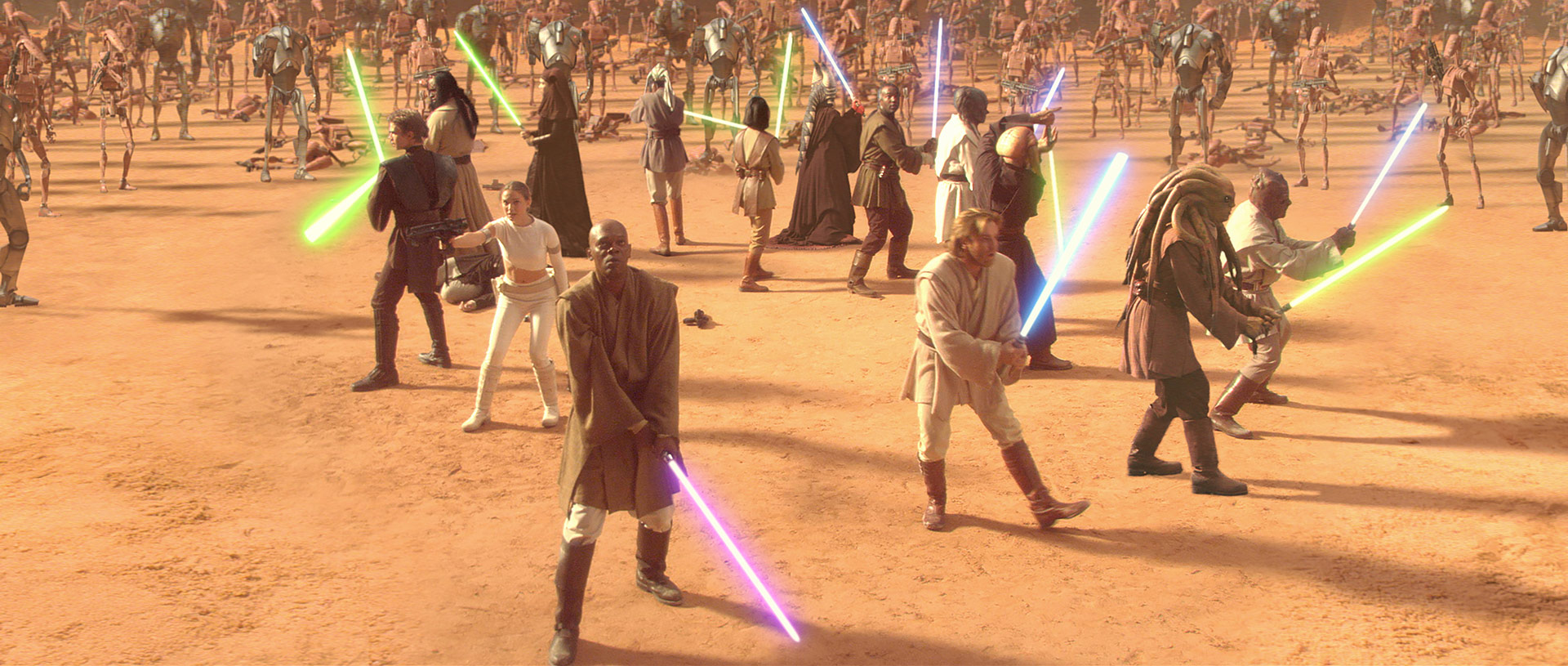
The prequels finally showed us what it was like before the Empire took over. A time which was previously only hinted at by characters like Obi-Wan in Episode IV. (Image © Disney/Lucasfilm)
... Not So Much Bad!
We’re not saying the Prequels were perfect. The films have rightly received a lot of criticism. However, not all of the criticism was justified, which even applies to the Gungan in the room: Jar Jar Binks. Admittedly, the character wasn't necessary at all. But we want to give credit to the creators for responding to the fans and significantly reducing Jar Jar's screen time. From a gungan-sized 17 minutes in the first film to just over two minutes in Star Wars: Episode II – Attack of the Clones and almost blink-and-you-miss-it 15 seconds in Star Wars: Episode III – Revenge of the Sith. And should an entire film trilogy be judged on a combined 20 minutes of a supporting character? And if so, why don't we do the same to the Ewoks in the original trilogy?
Whether the films are too political is up to every fan to decide. We readily admit that the opening crawl to Episode I didn't do itself any favors: "Turmoil has engulfed the Galactic Republic. The taxation of trade routes to outlying star systems is in dispute." However, the political problems led to the discovery of Anakin. And the seemingly small political conflicts had significant consequences. Without the Battle of Naboo, which was orchestrated by then-Senator Palpatine, the guy would never have become Chancellor. Or Emperor.
We do agree that the Prequels didn’t produce memorable villains. Sure, Count Dooku and Darth Maul are inherently intriguing but were only truly developed thanks to The Clone Wars. General Grievous, Nute Gunray, or Jango Fett, on the other hand, are as unnecessary as – sorry – Boba Fett was in the classic trilogy. Or Captain Phasma, General Hux, and the Knights of Ren in the Sequel Trilogy. But never mind, the Prequels primarily revolve around Anakin Skywalker. And at no point were the critics more wrong.
It was often claimed that Anakin was a whiny idiot, but today we must acknowledge: Hayden Christensen's portrayal was exactly what it was supposed to be. A true Skywalker! Who, in our experience, is a powerful man who can be overly self-pitying, sensitive, and arrogant. Think back to Luke, who spends the first third on Tatooine complaining about how unfair life is. Who considers himself a better pilot than Han Solo, even though he just met the guy. Who thinks the Rebels' most important military action against the Empire could be compared to shooting womp rats. Who lectures Han on the Force, which he only learned about hours before. Yes, this is a simplified portrayal, but the same pattern applies to Anakin, who gets upset with Obi-Wan, whom he considers inferior. Who rushes at Count Dooku despite his Master's advice against it. Who finds it outrageous that he is not granted the rank of Master, even though he was just appointed the youngest member of the Jedi Council.
Anakin Skywalker, or Darth Vader, is one of the best, most complex characters in film history. Slave, apprentice, Jedi, husband, father, Sith, machine, monster, hero. We get to see and experience every step of his character development. And the Prequels gave us the context we needed.
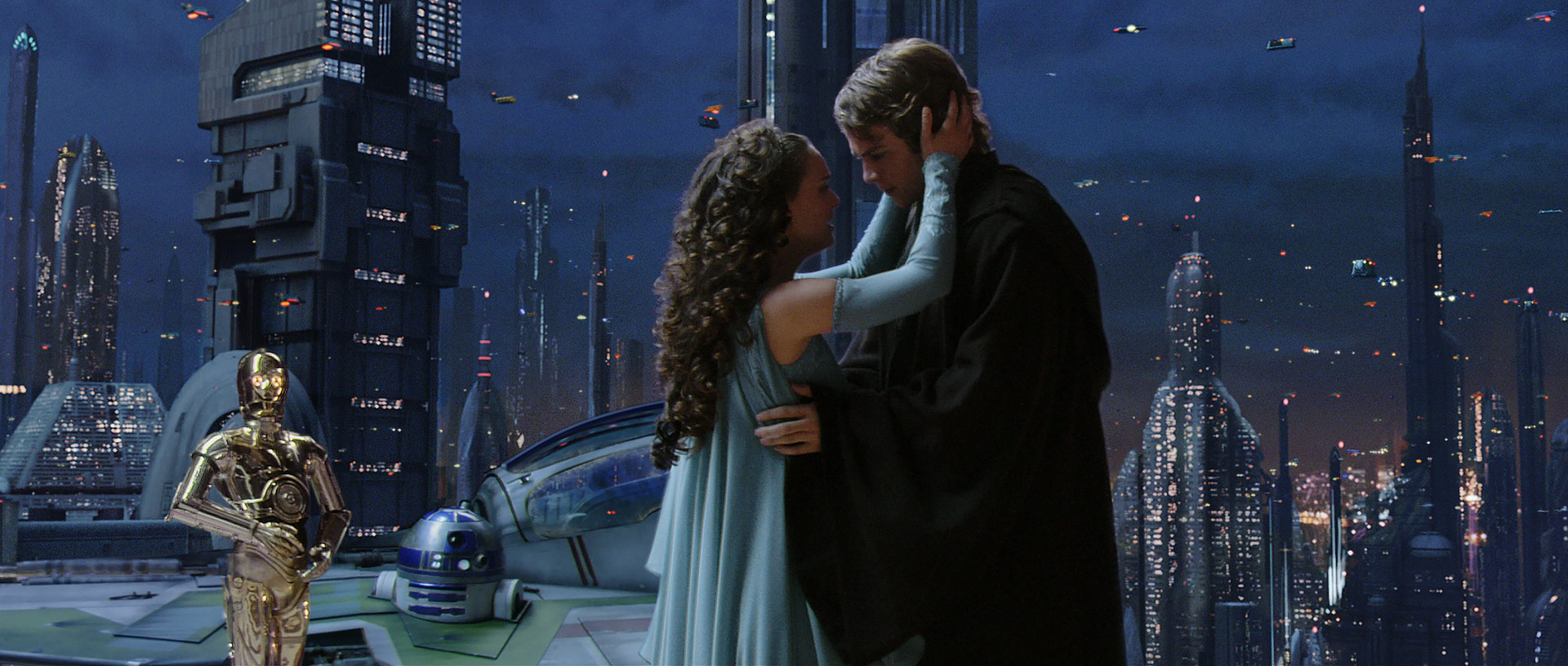
Anakin Skywalker, or Darth Vader, is one of the best, most complex characters in film history. Slave, apprentice, Jedi, husband, father, Sith, machine, monster, hero. We get to see and experience every step of his character development. And the Prequels gave us the context we needed.
The Fans
The fact that the reception of the Prequels has shifted so dramatically is primarily due to the fans. It's only logical that fans of the original trilogy had different expectations for the Prequels than the generation of fans who had their first Star Wars contact with Episode I. And who were often too young at the time to express their opinion. But the young fans who grew up with the Prequels are now adults. And they love the films just as much as the fans of the classic trilogy love their films. Perhaps Ewan McGregor said it best: "I think the critics just wanted to be seven or eight years old again, and they didn't get that."
Not to forget the memes mentioned earlier. Without them, the great reinterpretation of the Prequels might not have happened at all! Because the films, as campy as they sometimes are, are full of moments that everyone immediately remembers: "Hello there!" "Do it!" "I have the high ground." "I don't like sand." You’re probably seeing the meme in your mind right now! No wonder that the sometimes unintentionally funny moments were immortalized in meme culture – thereby preserving the Prequels. Keeping them alive and relevant. Coupled with nostalgic feelings for one's own childhood, this contributes to our positive memories of the Prequels today. And the many fans, including the 3 million members of the PrequelMemes subreddit, ultimately ensured that McGregor and Christensen returned for the Obi-Wan Kenobi series.
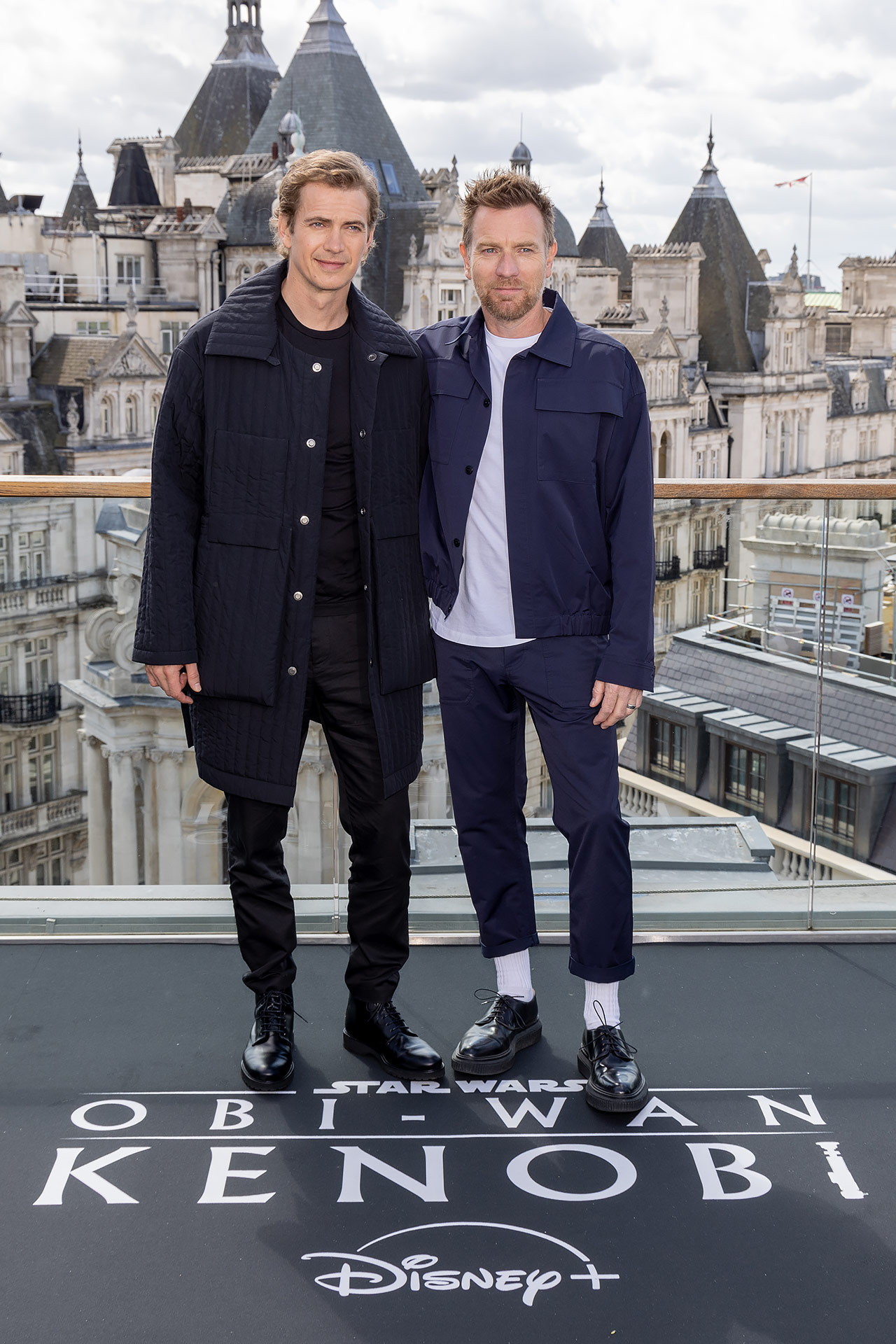
After the fan community almost collectively reversed their opinion of the prequels, Ewan McGregor and Hayden Christensen were ready to return to the galaxy far, far away. (Image © Disney/Lucasfilm)
What About the Sequels?
The truth is that many fans of the classic trilogy changed their opinion about the Prequels because they were disappointed by the Sequel Trilogy. Yes, the Prequels were different from the old Star Wars films. But at least they were coherent. With Episodes VII to IX, it was suddenly no longer a criticism that George Lucas was allowed to decide too much. Now it critisized that George Lucas wasn’t involved at all!
This brings us to the question of whether the much-discussed Sequel Trilogy could undergo a similar reinterpretation? We don't think so. Which is due to the starting point of the Prequels. After all, there are a whopping 16 years between Star Wars: Episode VI – Return of the Jedi and Episode I. 16 years during which Star Wars was almost dead. Which is hard to imagine today, where Star Wars is a media empire resembling the all powerful Galactic Empire of Palpatine.
When people think back to the 2000s and Star Wars, there were only the Prequels. (Sory, we love Jedi Knight and Heir to the Empire, too.) That's why they remember the Prequels. But when people think back to today ten years from now, there will be the Sequel Trilogy alongside spin-offs like Rogue One: A Star Wars Story, plenty of games like Star Wars Jedi: Fallen Order, a ludicrous amount of live-action series, endless comics, and so on. So in ten years time, when people think back to today, they won't think of The Force Awakens. They will probably think of The Mandalorian.
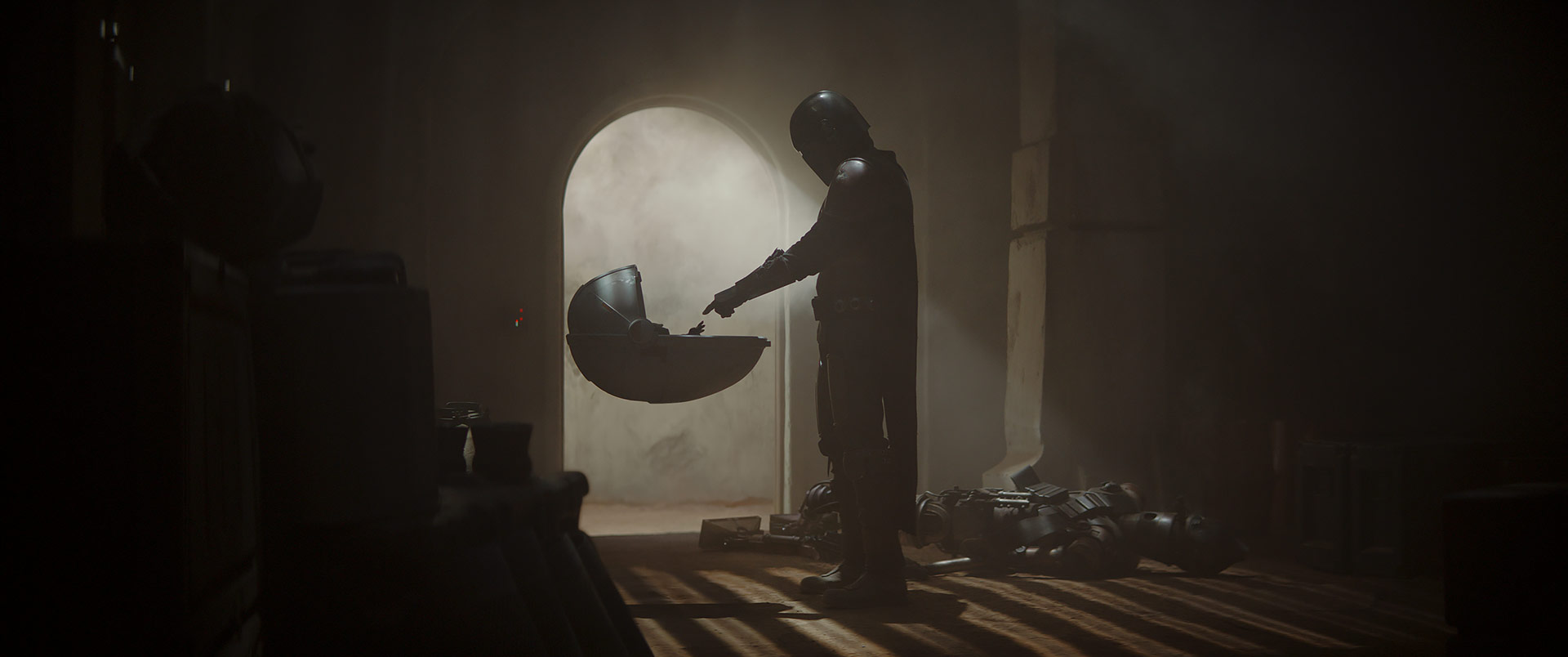
Modern day Star Wars is not The Force Awakens. Nor The Last Jedi or even The Rise of Skywalker. These days, Star Wars is represented by productions like The Mandalorian. (Image © Lucasfilm)